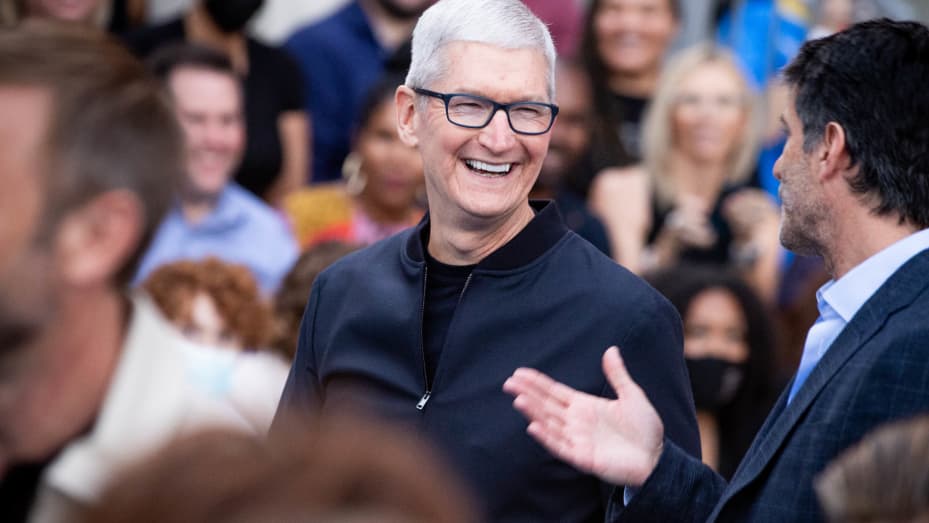A 10% dip in iPhone sales might ring alarm bells for Apple, especially since the company heavily relies on these devices for half of its revenue. However, investors seemed surprisingly unperturbed when Apple announced the decline in its fiscal second-quarter earnings report. In fact, the stock surged over 6% after the market closed, marking the most significant jump since November 2022, should the rally extend into regular trading on Friday.
Rather than dwelling too much on the iPhone revenue drop, Wall Street chose to accentuate the positive aspects. Apple’s gross margin expanded to 46.6%, continuing its upward trend, largely attributed to the flourishing services business, which brings in substantial profits.
Apple also hinted at overall revenue growth in the current quarter, anticipated to be in the low-single digits following a 4% dip in the second period. Analysts, according to LSEG, were eyeing third-quarter growth of 1.3%.
Gene Munster from Deepwater Asset Management described the guidance as a “relief,” given recent business trends. He commented after the report on CNBC’s “Fast Money,” suggesting that some investors were expecting a flat performance or a slight downturn in June, making the upward move significant.
But what really ignited investor excitement was Apple’s announcement of approving $110 billion for share buybacks, the largest ever for a public company. Over the past three years, Apple has greenlit $90 billion in annual repurchases.
The after-hours surge underscores how investors highly value Apple’s substantial cash flow and its commitment to returning more to shareholders. This marks a shift in Wall Street’s perception of Apple, moving away from a company focused solely on gadget sales to a financial juggernaut.
“Our free cash flow generation has been very strong over the years, particularly the last few years,” noted Apple CFO Luca Maestri during the earnings call.
Despite the revenue dip, Apple disclosed earlier this year that it boasts a staggering 2.2 billion active devices, highlighting the extensive reach of its customer base as it rolls out new subscription services. And while iPhone sales faced challenges from tough year-over-year comparisons, optimism remains for future growth, especially with the potential of AI-powered iPhones attracting customers from Android.
Apple’s reluctance to provide specific iPhone sales forecasts represents a departure from its typical practice, even amid reduced forward guidance since the pandemic. This cautious stance aligns with Apple’s overarching strategy to evaluate its capital structure as it aims to reduce its mammoth cash pile, currently standing at $162 billion.
With Apple having spent a whopping $658 billion on buybacks over the past decade, far surpassing its peers, the company’s aggressive buyback strategy has undoubtedly caught investors’ attention.
“For the last couple of years, we were doing $90 billion, and now we’re doing $110 billion,” highlighted Maestri during the call, emphasizing Apple’s commitment to returning value to shareholders.
As Apple moves towards achieving net cash neutrality, executives emphasized the need to reassess the company’s optimal capital structure. However, Maestri cautioned that reaching this milestone would take some time, hinting at a deliberate approach to financial management.















































